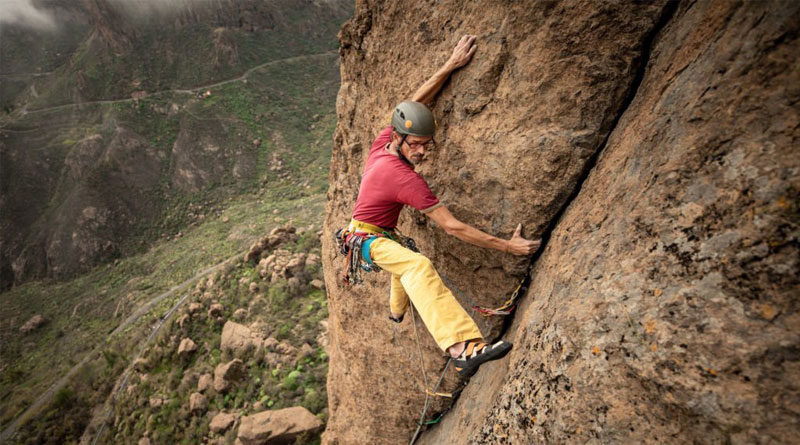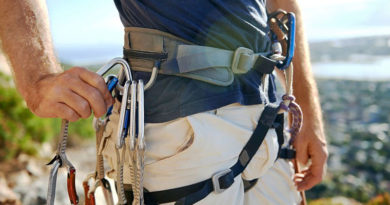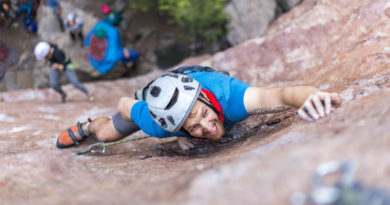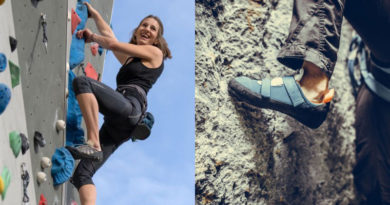Sport Climbing vs. Trad Climbing: The Differences
Rock climbing is a popular sport and hobby that people all over the world enjoy. Among the various types of climbing, sport climbing and trad climbing are two of the most popular. While both involve climbing up a rock face, they differ greatly in terms of the equipment used, techniques used, and overall experience.
In this blog, we will look at the differences between sport climbing and traditional climbing, as well as provide an in-depth analysis of each. We will look at the history, equipment requirements, safety precautions, and pros and cons of each style, as well as compare their physical and mental demands, risk factors, and overall enjoyment.
What is Sport Climbing?
Sport climbing is a type of rock climbing in which a climber climbs a rock face using pre-placed bolts for protection rather than placing gear as in traditional climbing. You do not need to bring your own protection devices, such as nuts, cams, or pitons. Because the bolts have already been drilled and secured to the rock. Sport climbing routes are generally shorter, steeper, and more straightforward than trad climbing routes. You can even rest and fall without risking serious injury.
Gear Required
Sport climbing gear is relatively simple. It consists of a climbing harness, climbing shoes, a chalk bag, and a rope. As I mentioned earlier, you do not need to carry your own protection devices, unlike in traditional climbing. However, you need a quickdraw (two carabiners connected by a piece of webbing) to clip the rope to the bolts. This is done for your protection as you climb.
Types of Climbing Routes
Sport climbing routes are typically shorter and more direct than traditional climbing routes. They are focused on difficulty and technical skills. The French system is used to grade the routes. It usually ranges from 4 to 9, with higher numbers indicating greater difficulty. Climbing routes for sport can be found both indoors and outdoors including climbing gyms and natural rock faces.
Safety Measures
You must be vigilant in following proper safety procedures because safety is a top priority in sport climbing. It is critical to inspect the bolts and anchors before climbing to ensure that they are secure and undamaged. Wear a helmet to protect yourself from falling rocks and other hazards. Use proper technique and be mindful of your body position when ascending to avoid injuries such as strained muscles or torn tendons.
Pros and Cons of Sport Climbing
Pros:
- Simpler and more accessible for beginners
- Requires less gear and preparation than trad climbing
- Emphasizes technical skill and physical ability
- Can be practiced both indoors and outdoors
Cons:
- Lack of adventure and exploration compared to trad climbing
- Reliance on pre-placed bolts may not appeal to purist climbers
- Can be difficult to find quality outdoor sport climbing routes in some areas
To summarize, sport climbing provides an exciting and unique challenge for climbers of all skill levels. It is a great way to get started in the world of rock climbing because of its emphasis on technique, physical ability, and accessibility. It is important to remember, however, that safety should always be your top priority and you must be cautious and aware of the risks involved.
What is Trad Climbing?
Trad climbing, short for traditional climbing, is a type of rock climbing in which the climber places protection devices, such as nuts, cams, or pitons, into cracks and other rock features as they climb. This means that the climbing gear is not attached to the rock and must be removed by the climber on their way up. Traditional climbing routes are typically longer, more complex, and more varied than sport climbing routes. They require a high level of technical skill, experience, and mental fortitude.
Gear Required
Trad climbing requires more equipment than sport climbing. It includes a climbing harness, climbing shoes, a chalk bag, a rope, and a variety of protection devices such as nuts, cams, or pitons. You must also carry slings, carabiners, and other anchoring and belaying equipment. Unlike sport climbers, trad climbers must insert their own protection devices into the rock as they ascend, requiring a higher level of skill, experience, and judgment.
Types of Climbing Routes
Trad climbing routes are generally longer, more varied, and more complex than sport climbing routes. These routes put a greater emphasis on exploration and adventure. Routes are graded using the Yosemite Decimal System, which ranges from 5.0 to 5.15, with higher numbers indicating greater difficulty. Traditional climbing routes can be found in both indoor and outdoor settings, such as climbing gyms and natural rock faces.
Safety Measures
Safety is critical in trad climbing. because you must rely on their own protection devices to avoid falls and other hazards. Before climbing, check the rock face for potential hazards such as loose rock or unstable features. Also, you must also be skilled at installing and removing safety equipment, as well as be aware of your body position and movement to avoid injuries such as falls or rope burn.
Pros and Cons of Trad Climbing
Pros:
- Offers a greater sense of adventure and exploration than sport climbing
- Allows for more creativity and flexibility in route selection
- Requires a higher level of skill, experience, and mental fortitude
- Provides a greater sense of accomplishment and personal growth
Cons:
- Requires more extensive gear and preparation than sport climbing
- Can be more physically and mentally demanding than sport climbing
- It may be more intimidating and challenging for beginners
- Carries a higher risk of injury or accident than sport climbing
To summarize, trad climbing provides a unique and challenging experience for climbers looking for adventure, creativity, and personal growth. It is an excellent way to push oneself to new heights and overcome personal limitations due to its emphasis on exploration, skill, and mental fortitude. However, it is important to remember that trad climbing is more dangerous than sport climbing, and climbers must always be prepared and vigilant.
Which is Better For You?
Depends on the Climber
The answer to the question of whether sport climbing or trad climbing is better depends on the individual climber and their goals and preferences. Some climbers prefer the structured nature of sport climbing and the emphasis on physical strength and agility, whereas others prefer the sense of adventure and exploration that trad climbing provides. Personal experience level, risk tolerance, and physical ability are all factors that can influence which climbing style is best suited for each individual.
Comparison of Difficulty Levels
In terms of difficulty, both climbings provide challenges to climbers of all skill levels. Some may argue that traditional climbing is more difficult in general because it requires a higher level of technical skill, mental toughness, and endurance. Sport climbing routes are more straightforward and predictable, with physical exertion and explosiveness providing the main challenge.
Comparison of Enjoyment
In terms of enjoyment, the answer is subjective and varies from climber to climber. Sport climbing may be more enjoyable for some due to the immediate gratification of successfully completing a difficult route. Trad climbing, on the other hand, maybe more rewarding due to the sense of adventure and exploration. Both climbing styles provide unique experiences and challenges and ultimately, enjoyment is determined by personal preference.
Comparison of Accessibility
Sport climbing is more accessible than trad climbing. Because it requires less specialized equipment and can be done in a wider variety of locations. Many climbing gyms offer sport climbing routes. This makes it a more accessible option for those who do not live near outdoor climbing areas. Trad climbing, on the other hand, needs more knowledge, specialized equipment, and a better understanding of rock features and hazards. As a result, it is a more difficult and less accessible option for many climbers.
Comparison of Safety
In terms of safety, sport climbing is generally considered to be safer than trad climbing. Because the protection devices are already fixed and the routes are generally shorter and less complex. This is not to say that sport climbing is without risk. You should always take the necessary precautions. Trad climbing is more dangerous because climbers must install their own protection devices and navigate longer and more complex routes. Climbers must also be prepared for unexpected hazards such as loose rock or unstable features, which can increase the likelihood of injury or accident.
Conclusion
In conclusion, sport climbing and trad climbing are two distinct styles of climbing that offer unique experiences and challenges. While sport climbing is more structured and emphasizes physical strength and agility, traditional climbing necessitates a higher level of technical skill and mental toughness. Both climbing styles provide varying degrees of accessibility, safety, and enjoyment, and the choice between them is ultimately determined by the individual climber’s goals and preferences.
Regardless of which style of climbing a climber prefers, safety should always come first. Climbers should take all necessary precautions to reduce the risk of injury or accident, such as wearing appropriate safety equipment, understanding the terrain and hazards, and practicing safe climbing techniques. Sport climbing and trad climbing can both be enjoyed safely and responsibly with the proper preparation and safety measures, allowing climbers to push themselves and explore new challenges in the vertical world.




